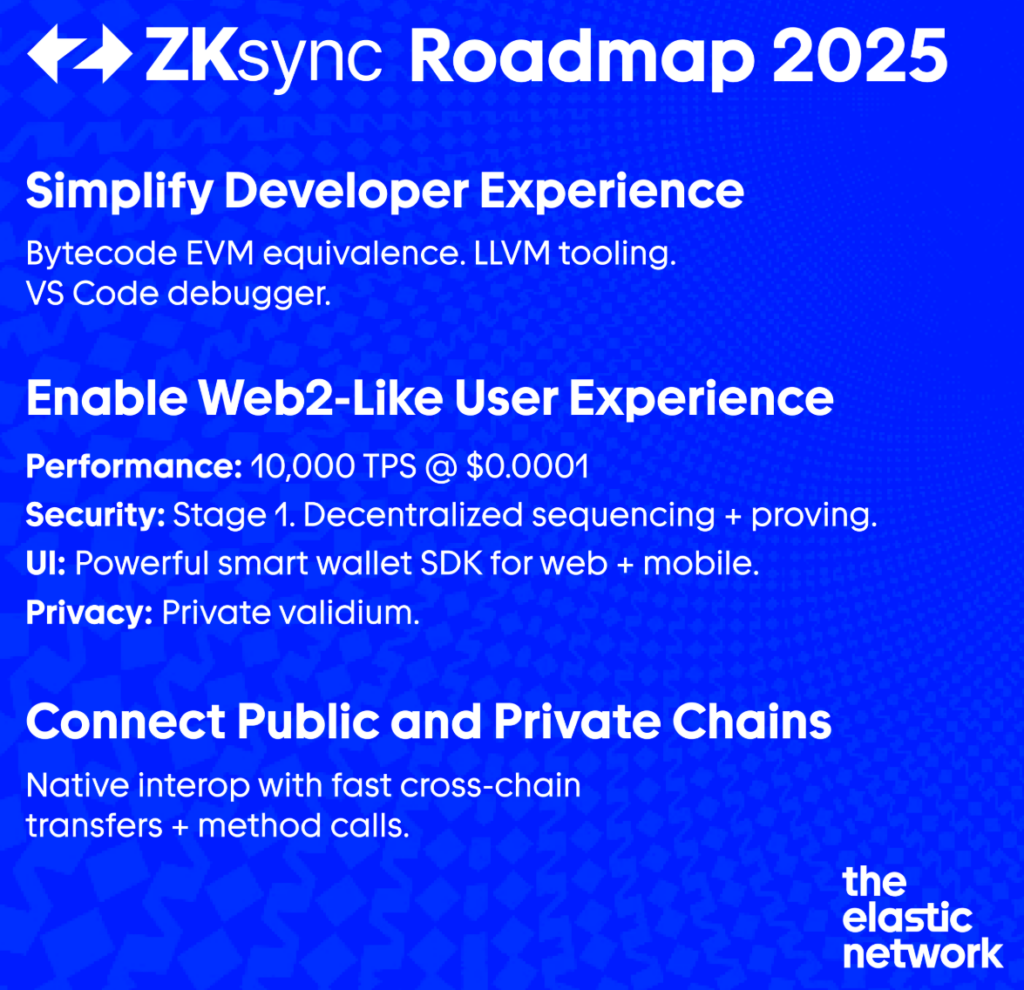- ZKsync targets over 10,000 TPS and $0.0001 transaction fees by the end of 2025.
- Elastic Network and ZK Stack expected to become key tools for blockchain developers.
- Privacy-preserving technologies like ZK-proofs could accelerate institutional crypto adoption and liquidity growth.
ZKsync, a layer-2 solution using zero-knowledge proofs, has outlined an ambitious roadmap to significantly enhance Ethereum’s scalability and usability. In its December 12 blog post, the company revealed plans to achieve over 10,000 transactions per second (TPS) while reducing transaction fees to $0.0001. This development is aimed at increasing accessibility for blockchain users and making ZKsync’s infrastructure a preferred choice for developers.
Building Developer-Friendly Solutions
The roadmap highlights ZKsync’s focus on refining its Elastic Network and ZK Stack, positioning them as essential tools for blockchain developers by 2025. With the goal of achieving over 10,000 TPS for Ethereum-based tokens and near-zero fees, ZKsync is pushing for broader adoption of Web3 technologies.
In a recent statement, ZKsync emphasized the importance of bridging the gap between Web2 and Web3 for developers. The protocol aims to offer a flexible, cloud-like development environment without compromising user experience, security, or performance. ZKsync believes that these improvements will enhance personal financial freedom for users while accelerating the global adoption of cryptocurrencies.

Privacy Technologies Driving Institutional Interest
Privacy-preserving technologies like ZK-proofs are increasingly gaining attention as a pathway to mainstream adoption. Remi Gai, founder of Inco, highlighted the significance of confidentiality during the 2024 FHE Summit. Gai explained that institutions remain cautious about entering decentralized finance (DeFi) due to the lack of privacy in Web3. Technologies such as fully homomorphic encryption (FHE) allow computations on encrypted data, offering a secure solution for institutional participants.
Gai suggested that advancements in privacy-focused blockchain solutions could unlock an additional $1 trillion in liquidity for the crypto sector. This momentum aligns with a broader trend, as privacy-focused protocols like Tornado Cash have been at the center of legal and regulatory debates in 2024.
With ZKsync’s efforts to address performance, usability, and privacy concerns, the protocol is positioning itself as a transformative force within the Ethereum ecosystem, paving the way for the next wave of blockchain adoption.















